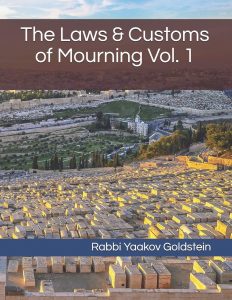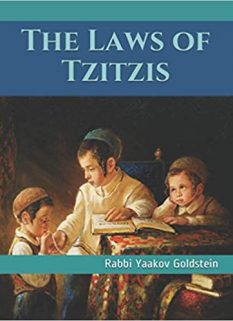
16. Taharah for Yoledes:
A woman who died during childbirth r”l, is buried in the state that she is found without Taharah or Tachrichin, just as explained regarding a murder victim.[1] However, if a few days passed since the birth until she passed away, and the injuries have stopped releasing blood, then they are to have the Taharah process performed on them prior to burial just like anyone else.[2] Practically, however, many communities are accustomed to perform the Taharah to any Yoledes who dies due to birth, and to dress her in Tachrichin, and to then place her clothing on top of her Tachrichin, and then above that to place the sheet.[3] [This is the widespread custom today.[4]]
Removing the child from a pregnant woman who died:[5] A woman who died during childbirth is to have her womb opened and the child removed, as perhaps he will be found to be alive. This applies even on Shabbos, even if it entails the performance of Biblical Melacha.[6] Practically, however, the custom is to no longer extract the child from her womb even during the week, being that by the time we unequivocally verify and determine her to be dead, the baby has certainly died.[7] [Nonetheless, if one is able to determine the exact time of death for the mother, as well as whether the baby is still alive, through medical apparatuses, then one may obviously desecrate Shabbos to help save the baby in accordance to the readings of these machines.[8] The above discussion is all in regards to removing the child for the sake of saving his life, however if one knows that the child is dead, then the implication is that there is no need to remove him from the womb and the mother is buried with the child. However, it is widely accustomed to always remove the fetus from the womb of a pregnant woman who died even if one knows for certain that the child is dead, as it is a Sakana/danger to bury the woman with her fetus inside.[9] Practically, while spiritual tactics[10] and gentle massaging may be used to have her expel the child after death, one may not surgically remove it, and in a case that the child is not expelled from the womb through the gentle tactics, she is to be buried in that state.[11]]
____________________________________________________________________________
[1] Rama 364:4; Maharil 65; Chochmas Adam 157:11; Kitzur SHU”A 197:11
The reason: The reason for all the above is because a person with an open wound which releases blood needs to have the blood buried with him, and thus we avoid cleaning him and changing his clothing, which would wash away the blood. [Shach 364:11; Taz 364:2; Maharil ibid]
[2] Shach 364:11; Taz 364:2 [negates custom to bury Yoledes in her clothing even if many days passed]; Bach 364; Chochmas Adam 157:11 and Kitzur SHU”A 197:11; Misgeres Hashulchan 197:1
[3] Shach ibid; Beis Lechem Yehuda 364; Beis Hillel 364 that so is the custom; Chochmas Adam 157:11 and Kitzur SHU”A 197:11 rule like Rama ibid although conclude that this matter is dependent on the community custom
[4] Gesher Hachaim 11 regarding Yerushalayim; Darkei Chesed 13:6 [p. 54]; Nitei Gavriel 48:10
[5] Admur 330:7 “A woman which sat on the birthing stool and died, one is to bring a knife on Shabbos even through a public property, and tear her stomach and take out the baby as perhaps [the baby] will be found alive.”; Michaber 330
[6] The reason for why we suspect that he is alive: Now, although majority of times the infant dies prior to the mother, nevertheless by the danger of a life we do not follow the majority, and at times it is able to live after its mother’s death. Now, although this infant never had a living status, Shabbos is to be desecrated due to doubt just as one who did have a living status. [Admur ibid]
[7] The reason for why today we are no longer accustomed to tear the mothers stomach: The reason that [cutting the mother’s womb] is not in practice today even during the week, is because we are no longer expert in the mother’s death to such close proximity that the child still can live, as [we suspect that] perhaps she fainted, and if her stomach were to be torn she will die, and thus one needs to wait [to verify whether she has died or merely fainted] and until then the child has certainly died. [Admur ibid]
[8] Piskeiy Teshuvos 330:5
[9] Aruch Hashulchan 330:8 that so is the custom [although states that he does not know the reason why]; All Poskim in next footnote; See Gesher Hachaim 5:6 who negates this custom!
[10] Such as speaking into her ear and asking her to expel the child, promising to circumcise the child and call him a name, and other matters of the like. [See Poskim in next footnote]
[11] See Heishiv Moshe 13; Shvus Yaakov 1:13; Tuv Taam Vadaas 1:285; Maharsham 2:159; Mishmeres Shalom Mem 74; Divrei Chaim 2:137; Arugas Habosem Y.D. 252; Darkei Chesed 13:7; Nitei Gavriel 48:12 and footnotes 15-16



Leave A Comment?
You must be logged in to post a comment.